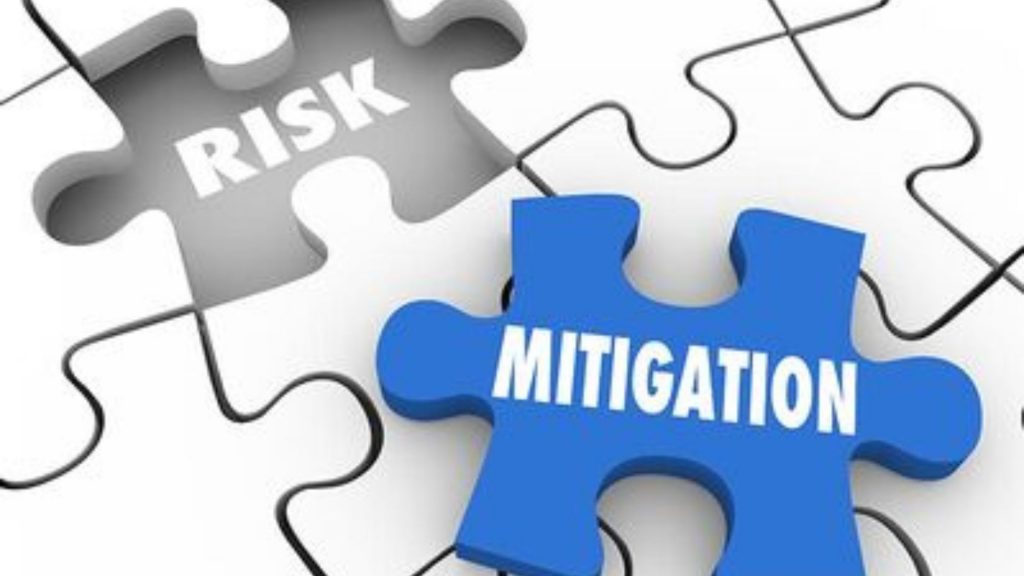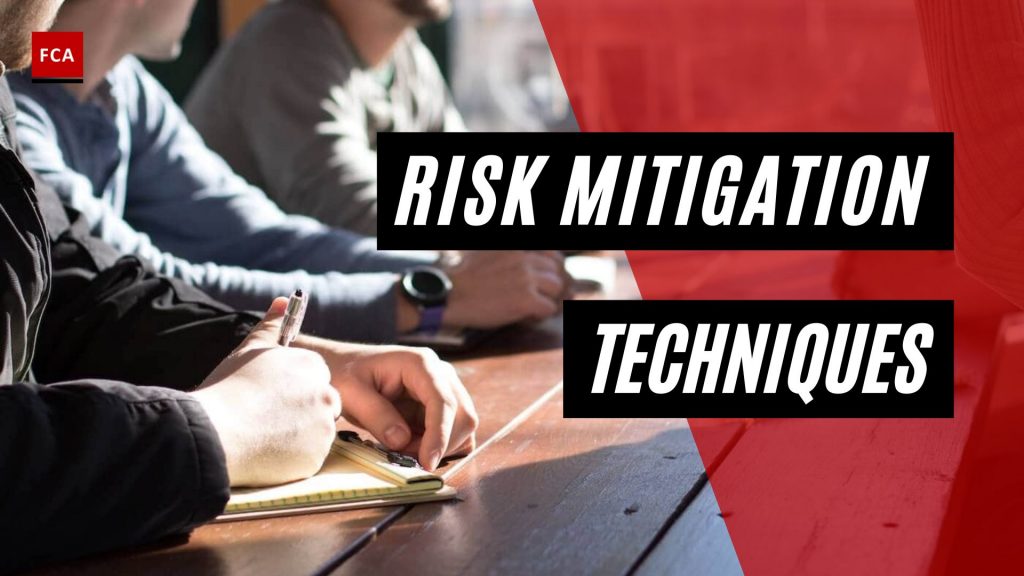The risk mitigation techniques. Risks identified in different processes and departments must be mitigated by identifying and applying relevant internal controls.
The process of planning and developing methods and options to reduce threats or risks to project objectives is referred to as risk mitigation. A project team may use risk mitigation strategies to identify, monitor, and evaluate the risks and consequences of completing a specific project, such as the creation of a new product. Risk mitigation also includes the actions taken to deal with issues and the consequences of those issues in relation to a project.

Risk Mitigation Techniques
Management needs to ensure that appropriate risk mitigation strategies and action plans are developed to minimize or avoid the potential effects of the identified risks. As ERM is an integrated process of managing the risks, therefore, risk mitigation techniques must be cross-departmental and cover end-to-end processes. Risk mitigation is an ongoing process, and it largely depends on the risk landscape, existing risks, and emerging risks.
Management needs to identify the acceptable risk level and beyond which the tolerance level is zero. Risk mitigation may require establishing separate units to timely identify and manage the risks, or the risk management culture may be embedded in the processes of each department, where the departmental head also plays the role of risk manager for his relevant risks.
Management should identify and mitigate the effect of bias in carrying out risk assessment practices. For example, confidence bias may support a pre-existing perception of a known risk. Additionally, how risk is framed can also affect how risks are interpreted and assessed.
For example, there may be a range of potential impacts for a given risk, each with a separate likelihood. Thus, a risk with a low likelihood but high impact could have the same outcome as a high likelihood, low impact; however, one risk may be acceptable to the organization while the other is not. As such, how the risk is presented and framed to management is critical to mitigating any bias.
Bias may result in the severity of a risk being under or overestimated and limit the selected risk response’s effectiveness. Underestimating the severity may result in an inadequate response, leaving the entity exposed and potentially outside of the entity’s risk appetite. Overestimating the severity of risk may result in resources being unnecessarily deployed in response, creating inefficiencies in the entity. Additionally, it may hamper the entity’s performance or affect its ability to identify new opportunities.
There is no doubt that organizations will continue to face a future of volatility, complexity, and ambiguity. Enterprise risk management will be an important part of how an organization manages and prospers through these times. Regardless of the type and size of an entity, strategies need to stay true to their mission. And all entities need to exhibit traits that drive an effective response to change, including agile decision-making, the ability to respond cohesively, and then the adaptive capacity to pivot and reposition while maintaining high levels of trust among stakeholders.

Risks Prioritization And Establishing The Criteria
An organization prioritizes risks as a basis for selecting responses to risks. Organizations prioritize risks to inform decision-making on risk responses and optimize the allocation of resources. Given the resources available to an entity, management must evaluate the trade-offs between allocating resources to mitigate one risk compared to another. The prioritization of risks, given their severity, the importance of the corresponding business objective, and the entity’s risk appetite helps management in its decision-making.
Priorities are determined by applying agreed-upon criteria. Examples of these criteria include:
Adaptability, which is the capacity of an entity to adapt and respond to risks (e.g., responding to changing demographics such as the age of the population and the impact on business objectives relating to product innovation).
Complexity, which is the scope and nature of a risk to the entity’s success. The interdependency of risks will typically increase their complexity (e.g., risks of product obsolescence and low sales to a company’s objective of being the market leader in technology and customer satisfaction).
Velocity, which is the speed at which a risk impacts an entity. The velocity may move the entity away from the acceptable variation in performance. (e.g., the risk of disruptions due to strikes by port and customs officers affecting the objective relating to efficient supply chain management).
Persistence, which is how long a risk impacts an entity (e.g., the persistence of adverse media coverage and impact on sales objectives following the identification of potential brake failures and subsequent global car recalls).
Recovery, which is the capacity of an entity to return to tolerance (e.g., continuing to function after a severe flood or another natural disaster). Recovery excludes the time taken to return to tolerance, which is considered part of persistence, not recovery.
Prioritization considers the severity of the risk compared to risk appetite. Greater priority may be given to those risks likely to approach or exceed risk appetite.
Risks with similar assessments of severity may be prioritized differently. That is, two risks may both be assessed as «medium,» but management may give one more priority because it has greater velocity and persistence, or because the risk response for one risk provides a higher risk-adjusted return than for other risks of similar severity. How risk is prioritized typically informs the risk responses that management considers. The most effective responses address both severity (impact and likelihood) and prioritization of a risk (velocity, complexity, etc.).

Assume And Accept Risk
The acceptance strategy may include team members working together to identify potential project risks and whether the consequences of those risks are acceptable. Along with identifying risks and their associated consequences, team members may also identify and assume the potential vulnerabilities that risks present.
This strategy is commonly used for identifying and understanding the risks that can affect the output of a project, and its purpose is to bring these risks to the attention of the business so that everyone working on the project has a shared understanding of the risks and consequences involved.
Avoidance Of Risk
The avoidance strategy presents the project’s accepted and assumed risks and consequences, as well as opportunities to avoid those accepted risks. Some methods of putting the avoidance strategy into action include planning for risk and then taking steps to avoid it. For example, to reduce risk in new product production, a project team may decide to implement product testing prior to final production approval to avoid the risk of product failure.
Final Thoughts
Risk mitigation is the process of preparing for disasters and devising strategies to mitigate their effects. Although the risk mitigation principle is to prepare a business for all potential risks, a proper risk mitigation plan will weigh the impact of each risk and prioritize planning based on that impact. Risk mitigation focuses on the unavoidability of some disasters and is used in situations where a threat cannot be completely avoided. Mitigation, as opposed to risk avoidance, deals with the aftermath of a disaster and the steps that can be taken prior to the event to reduce adverse and potentially long-term effects.









